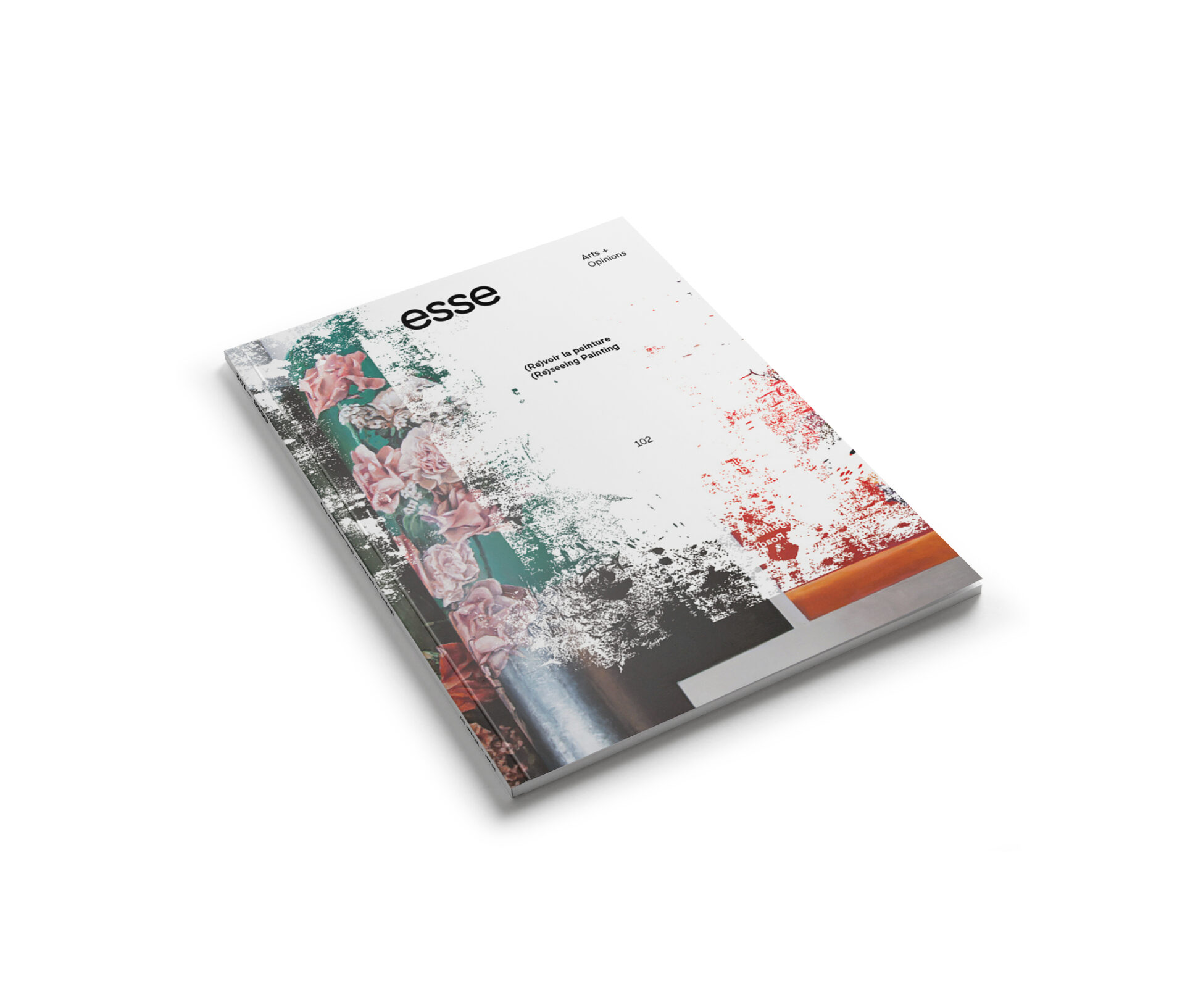Painting Criticism or Painting as Criticism
In a talk given in 2019 at the Fondation Louis Vuitton, art historian Isabelle Graw observed that painting enjoys enormous intellectual prestige and that it has been the subject, in recent years, of many analyses and theories.1 1 - Drawing on Graw’s book The Love of Painting: Genealogy of a Success Mediumpublished in 2018 by Sternberg Press, the talk “The Vitality of Painting— Notes on the Success of a Medium” is available online.. The ongoing reaffirmation of painting’s vitality through different independent exhibition projects or through its valorization in museum collections likely helps to strengthen this perception. However, works offering in-depth reflections on the most current issues are rare, at least in the Canadian academic context.
The decision made by Esse to present features dedicated to painting,2 2 - See in particular issue 76 of Esse,The Idea of Painting (Fall 2012).though our themes are often based on social issues, is part of an attempt to encourage critical analyses of painting practices. The idea of (re)seeing painting invited writers to move away from recurring considerations of its death and resurrec- tion, which, as Daniel Fiset emphasizes, “don’t go too far beyond the polemical or rhetorical: their constant references to previous art discourse turn their own arguments into a kind of living-dead.” It is important, however, to caution those who might expect this issue to offer a report on the state of painting today. While presenting a selection of articles that attest to the diversity of aesthetic and conceptual approaches to this art form, above all this issue puts forward some considerations of the different strategies deployed in art practices or dissemination networks. We note, for example, how the digital era has substantially trans- formed the modes of circulation and reception of painting, a transformation that has been exacerbated by the lockdown. The Web has not only enabled an unprecedented access to works, but has also con- tributed to their reappropriation by Internet users and their renewal outside of the art field. The mass culture conveyed by social media also feeds the imaginaries of many artists who, by channelling it into their work, create a kind of back and forth between the materialization of the digital on canvas and the dematerialization of painting in the virtual world where it is presented.
We also notice a renewed interest in figuration, as well as in a style sometimes characterized by popular or more marginal iconography associated with social movements (particularly queer culture) and sometimes, by a reactivation of genres from classical or modernist art history. Yet the attempts to develop new pictorial genres by reproducing previous ones (what critics call the zombie style) raise questions about the originality of the works or the intentions of the artists, who are suspected of falling into the trap of commercial considerations. The fact is that for a long time the transactional aspects of painting, reinforced by its unique or non-reproducible character, have placed it at the forefront of debates on the capitalization of art. This issue is no exception. A careful and sensitive reading will prevent us, however, from perceiving merely a virulent criticism of these aesthetic trends. As Connor Spencer states in reference to technical virtuosity, used perhaps as a gimmick to counteract representational ease in certain figurative works, “the gimmick can be a ‘survival strategy’ for vulnerable subjects” seeking to avoid capitalism’s grip.
In light of such controversies, we realize that paint- ing hasn’t lost any of its ability to raise the theorists’ interest in putting forward engaging considerations. Though pictorial research may remain central to painters, some of them use their works as formidable tools of empowerment or protest, while others consider them as a means to critically examine society. The words of Thomas Fort apply to many artists: “They take a transverse path in order to elude the inherited conservative dogmas of narratives and academic hierarchies whose overriding power persists.”
Ultimately, assembling the works by discipline rather than by theme offers a chance to appreciate the profusion of ideas being developed by painters. It also helps us to realize that painting has always maintained the ability to talk about itself and the world around it at the same time.
Translated from the French by Oana Avasilichioaei
